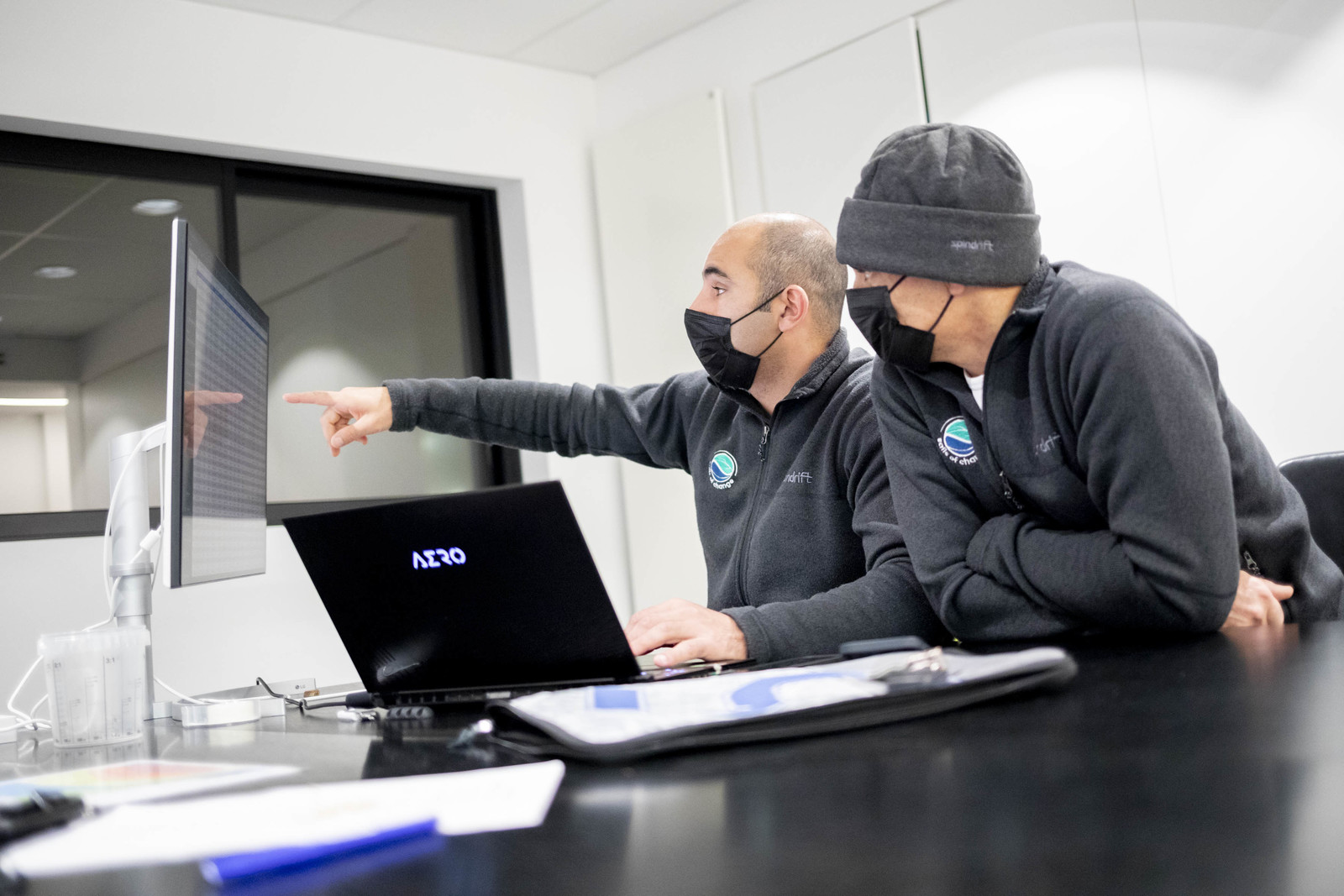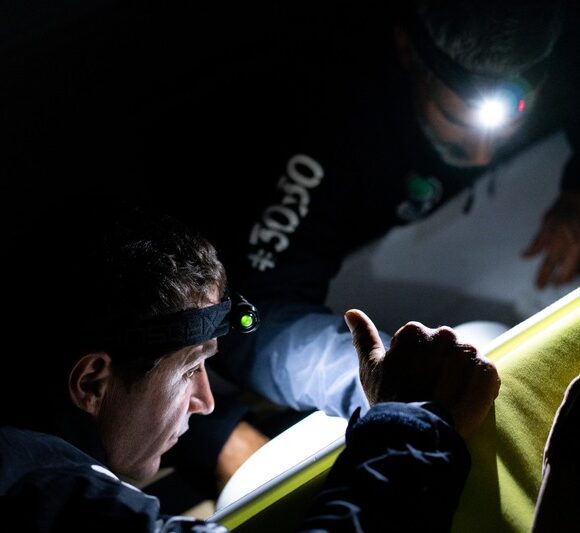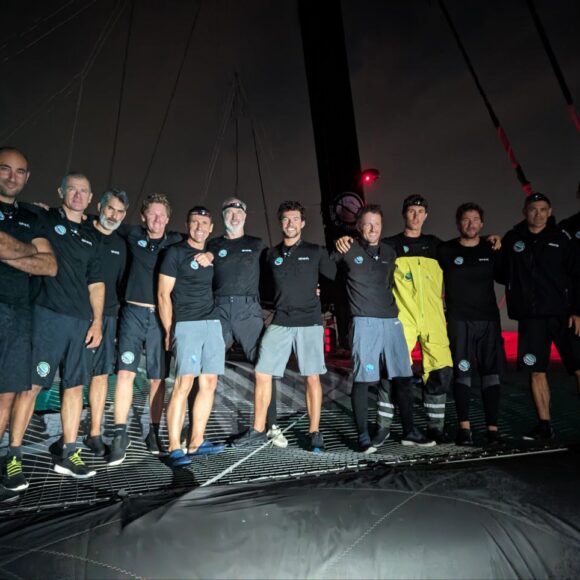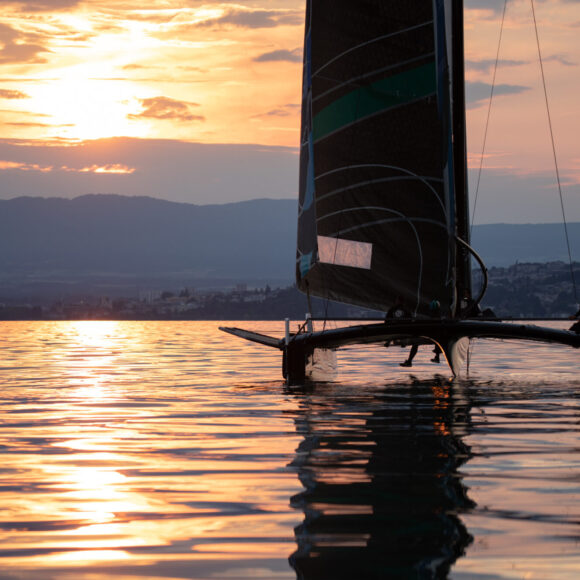The situation in the South Atlantic was not offering the right conditions for Sails of Change to reach the Cape of Good Hope in around a dozen days. Jean-Yves Bernot, onshore router for Dona Bertarelli and Yann Guichard’s team, discusses these meteorological uncertainties …
Why have there been a succession of postponed starts for the Jules Verne Trophy record campaign?
Sails of Change had favourable conditions to make rapid headway as far as Cape Frio (offshore of Rio de Janeiro). In theory, the timing was right, very favourable in fact, for the maxi-trimaran to cross the equator, but after that, there was so much instability around the Saint Helena High, that the passage time off the Cape of Good Hope was not good …
But there were two scheduled starts in November!
In both instances, there were no low-pressure systems forming off Brazil to propel the boat very quickly towards South Africa. These are minor issues, but there was just a six-hour window for Sails of Change to hook onto a favourable system… Six hours of uncertainty in an eight-day forecast may sound small, but it matters a lot! These two ‘code greens’ are also linked to the volatility of these long-term weather forecasts.

A decision has to be made…
There’s a ‘code green’ when there’s an opportunity to set sail and the whole Spindrift team has to be poised to go! It’s important to point out that weather data is updated every twelve hours and it is provided by both American and European models. If they aren’t showing the same situation over several days, you have to at least wait until they agree on a similar configuration. That’s all part of a record attempt like this: it’s vital not to miss an opportunity and to remain ready to go!
So what was the situation yesterday, 30 November 2021 ?
It’s still not entirely done and dusted. There are conditions for a rapid descent to Brazil, but it’s what comes next… There may be a small low-pressure system forming and, with luck on our side, we can hook onto it, but after that…? It’s worth noting that the weather models must be in agreement, and, in any case, the whole team has to be prepared to snap up an opportunity. The American forecasts were more optimistic than those of the Europeans, then the configuration deteriorated further for both models.
But weather simulations have evolved in leaps and bounds over recent years…
Absolutely! We no longer route the boats in the same way either. During the initial attempts from 1990-2000, the objective was the passage of the equator, as it wasn’t possible to predict the weather beyond five days. Now, the boats are even faster and reliable data runs for up to ten days and more! We now have to target the Cape of Good Hope in a maximum of twelve days: it’s a whole different ball game. We can clearly see what’s going to happen in the South Atlantic eight days in advance.

Is there a relationship between the position of the Azores High (northern hemisphere) and that of the Saint Helena High (southern hemisphere)?
I get what you’re saying: a favourable weather situation in the northern hemisphere and hence an unfavourable one in the southern hemisphere! No. There is no correlation between these two parts of the Earth, at least not in terms of the timeframe we’re working with. There may be if you were to average it out over a year, but I don’t have that information.
So regardless of whether the Azores High is high or low in latitude, it doesn’t have an influence on the situation in the South Atlantic?
I don’t believe it does: there is no correlation between the north and south; not in terms of the time frame we work with for routing the Jules Verne Trophy. No compensation would come into play over such a short time.
Sails of Change is back on standby in La Trinité-sur-Mer through until 15 January.
It may sound late, but when you look at the previous records, you notice that Groupama 3 set sail on 31 January! Equally IDEC Sport set off in the middle of the winter in the northern hemisphere… It’s only early December for us here, the team still has time.
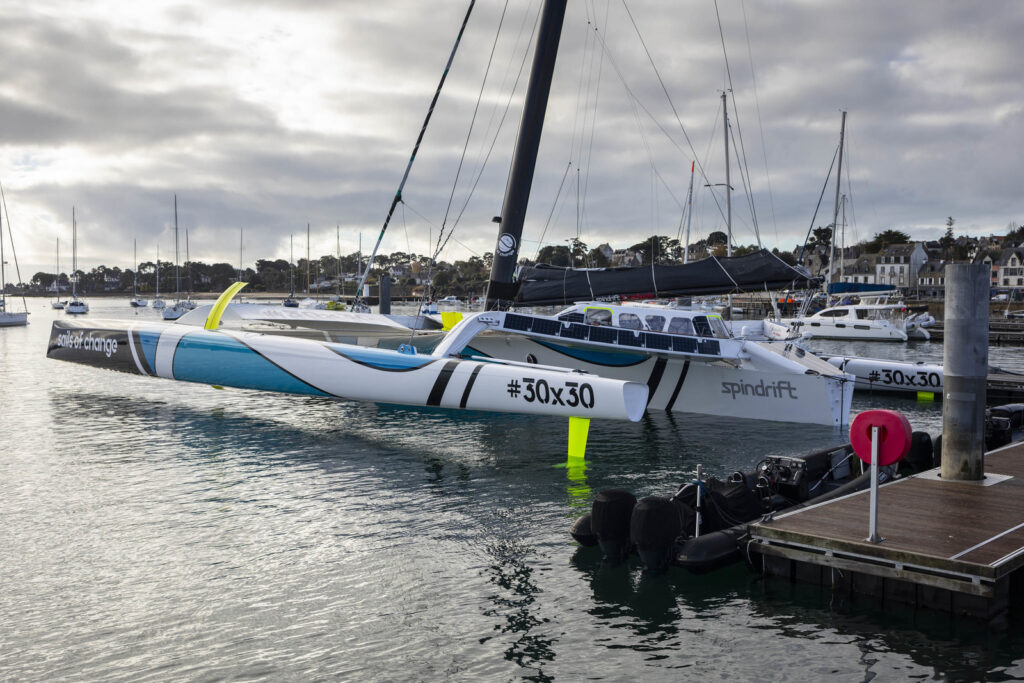
But there’s a good conjunction with the full moon on 19 December and the summer solstice of the southern hemisphere on 21 December…
That’s true, but it’s not enough to cross the equator in under five days; you have to be able to connect onto something beyond that! The current Jules Verne Trophy record is so low (40 days 23 hours and 30 minutes) that you need to be at Good Hope with a lead of at least a day… Francis Joyon and his men crossed the Indian Ocean really very quickly: as a result, you need some room for manœuvre on exiting the Atlantic Ocean. On top of that, they took less than six days to sail from the equator back to Ushant! As such, you need to steal a march at the start of the record attempt…
Logically, there are around ten weather ‘windows’ each winter?
You can’t look at it like that: it’s totally dependent on the year and there are no statistics about that! There are winters with lots of opportunities and others where you have to stay on land. Furthermore, the opportunities are not the same from one year to the next, plus it depends what you want to do and where you want to go. Here for example, there was an opportunity to improve on the reference time between Ushant and the equator, but it didn’t extend to the round the world record… Sails of Change could probably beat its own WSSRC record to the equator (Spindrift 2 in 2019: 4 days 20 hours and 13 minutes) but Dona Bertarelli, Yann Guichard and their team are chasing the Jules Verne Trophy!
Is the situation looking favourable for the coming days?
There are no longer any openings for the next few days: we’re going to have to wait a bit… That doesn’t stop us routers from looking at what would have happened had Sails of Change set sail though: the weather window on 25 November would have gone very light after Cape Frio (offshore of Rio de Janeiro). The one on 30 November doesn’t look favourable either in the southern hemisphere, with very bad weather at the Cape of Good Hope, but we’ll look into the situation in more detail over the next few days. The idea of setting off and then coming back is only valid if the return journey is quick as there may be a favourable ‘window’ on returning to Ushant…
2021 crew on the maxi-trimaran Sails of Change:
Yann Guichard – skipper
Dona Bertarelli – on-board reporter
Benjamin Schwartz – navigator
Jacques Guichard – Watch leader
Xavier Revil – Watch leader
Jackson Bouttell – sailor, bowman
Duncan Späth – sailor
Thierry Chabagny – sailor
Gregory Gendron – sailor
Julien Villion – sailor
Yann Jauvin – sailor, bowman
Jean-Yves Bernot – onshore router
